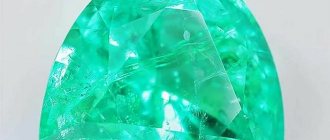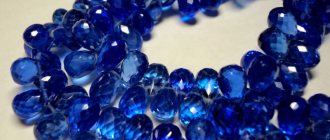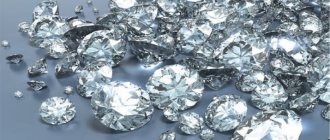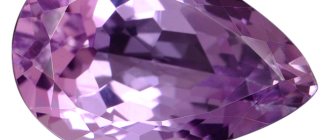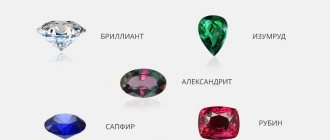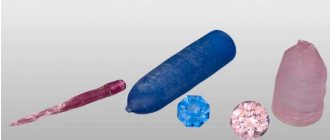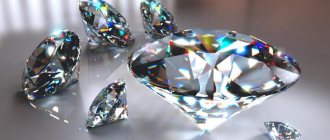Beauty is rarely associated with stones. Although they can be surprisingly artistic and graceful.
Stones are hard rocks that contain minerals. There are more than 4,900 types of gems in the world. The stone world is fabulously diverse. Aquamarine, malachite, diamond, amethyst, and amber always have their own history.
Man has been using minerals since ancient times. At first they served him as a tool. Many centuries later, people began to actively use stones in magical ceremonies, attributing magical properties to them. Today, amazing gems decorate jewelry, dresses, accessories, and they are used to create elegant vases and boxes.
What is a gemstone?
Precious stones mean rare , incredibly beautiful minerals of different shades and shapes - such gems are used in jewelry.
In addition, the gemstone cannot be cheap
The definition already indicates that this is a jewel, a treasure. Therefore, minerals are bought not only for use as jewelry, but also for investment. As a rule, the value of precious stones does not decrease over time and, on the contrary, increases. This is beneficial: if necessary, such a pebble can be sold for good money.
Gems
Topaz
One of the hardest crystals, for which it has been valued by jewelers since ancient times. Comes in a wide variety of colors. The most valuable samples are blue, pink, yellow; transparent topazes are quite common.
What color are topazes?
Large stones of high quality are not so rare. Sometimes they try to sell colored topazes as more valuable gems.
Topaz will add mystery to its owner and surround it with an aura of mystery.
What are semi-precious stones?
Note that the division is conditional and is associated primarily with the price of the mineral. Such gems are also beautiful, but their deposits are widespread, and their mining is well established - that is, there is no shortage. This prevents suppliers from raising prices.
Many people can afford such minerals. Semi-precious stones are not considered exclusive or an investment.
Semiprecious stones
Why do people love yellow?
Solar minerals are traditionally associated with pleasant things. They symbolize light, warmth and wealth. After all, gold, the number one metal, is also yellow.
There are no cold shades in this range, and the richness of colors allows you to choose an option depending on age, gender, social status, and finally, mood.
This color is held in special esteem in the East:
- The ancient Egyptians associated it with Ra, the supreme deity of the Sun. Intended exclusively for priests; even the aristocracy did not have the right to wear robes of the solar scale.
- This is the color of Buddha, and among Buddhists it symbolizes enlightenment.
- The Japanese are sure that the color of the Sun strengthens willpower and makes you braver.
Shades of sunny color are clearly associated with optimism, light, wealth, even luxury.
The rarity factor gives additional value to such minerals. There are fewer of them in nature than black, brown, red or blue ones.
Can stones change status?
Yes, such cases are known. For example, amethyst has long been considered a rare precious mineral. This was the case until deposits of high-quality amethyst were discovered in Brazil.
The price of the mineral immediately fell, and it began to be considered semi-precious. But such cases are very rare.
From time to time, another situation arises: although the stone is common and is considered semi-precious, its single copies (for example, in color or size) distinguish it from its counterparts and make it a rare, unique gem.
In addition, some minerals are considered precious only in a particular country, while in other countries they are quite common stones.
Rhinestone
Silicon dioxide is a type of transparent quartz, perfectly pure, large samples are quite rare and expensive. The most famous representative of this family is smoky quartz, the more popular and not entirely correct name of which is rauchtopaz.
In nature there are quite large crystals, which allows it to be used as an ornamental stone. It is believed that smoky crystals can cloud the brain, so they are often used for meditation and communication with the other world. The black variety of crystal is called morion .
The Svarovski company, which began its activities as a rock crystal cutting company, now produces synthetic glass - an analogue of a natural mineral.
- This is important: The healing and magical properties of rock crystal
List of precious and semi-precious stones
Ordinary people who do not consider themselves experts in the field of jewelry are advised to learn the list of stones classified as precious and expensive in Russia:
- diamond;
- aquamarine;
- alexandrite;
- ruby;
- sapphire;
- emerald;
- pomegranate;
- chrysolite.
The list of semi-precious stones is more extensive and includes many more minerals. Here are some types:
- cornelian;
- agate;
- jasper;
- opal;
- turquoise;
- onyx, etc.
In addition, stones of organic origin are separately distinguished - these are minerals that were formed during the life of plants, marine or terrestrial inhabitants. They take time to create, so they are also considered valuable options:
- pearl;
- corals;
- nacre;
- amber.
The price of such minerals depends on the size, clarity and setting. Thus, amber earrings can be set in high-quality gold and then the price of accessories increases - amber is considered almost a precious stone.
If the frame uses silver, jewelry steel, or another alloy of no value, the jewelry is considered costume jewelry, and its price is affordable for many people.
What stones are considered precious and semi-precious?
How is the value of a stone determined?
In applied mineralogy, there are several criteria on the basis of which an expert opinion is made on the cost of a gem:
- Natural rarity - for example, to extract 1 pure carat of diamond, up to two tons of ore are processed, and only 20% of the nuggets are suitable for subsequent cutting.
- Type of origin – natural or synthetically created stone.
- The hardness coefficient is 10 for diamonds, 5-6 for jade, up to 5 for semi-precious stones.
- Transparency - there are transparent, opaque sparkling, translucent or matte stones.
Based on this, each region of the world compiles its own list of cost leaders. At the absolute top are cut diamonds, sapphires, rubies and emeralds; they are the most expensive, given their rarity, difficulty of extraction, and physical properties.
The so-called organogenic minerals - coral, pearls, amber or jet - stand apart. They have a rather controversial status, especially considering the increased number of pearl farms in the tropics, where mother-of-pearl placers have long ceased to be a scarce commodity.
In addition to all of the above, there are separate classifications of stones:
- Synthetic - created in the laboratory, using the cold crucible method and other technologies. A good example of artificially grown minerals is cubic zirconia, which is not included in any of the official classifications.
- Jewelry imitations - the use of glass, crystal, quartz and raw materials similar in molecular structure to create a product (rhinestone) that is as similar as possible to a precious gem. The leader in the imitation market is Swarovski crystals.
- Treated stones are a material that has undergone additional thermal, radiation or chemical treatment to improve its natural properties, strength, color change, etc.
- Composite crystals are the so-called doublets and triplets, when a single large stone that can look monolithic is created from fragments using epoxy resin or other gluing methods.
In recent decades, the difference between precious and semi-precious stones has been actively blurred. Partly due to a reduction in production, as well as the transition of jewelers to affordable materials. So far, the market remains conservative, natural crystals are still the most valuable, but no one denies the possibility of revising the cost of raw materials.
What rules should you follow when purchasing?
Any person, if he sees a beautiful stone, is interested in its name - you can get the relevant information from the seller. To find out whether a stone is precious or semi-precious, reference books or a consultation with a jeweler will help.
Another thing is that often unscrupulous sellers pass off imitation or counterfeit minerals as natural minerals. To avoid getting into such a situation, you need to know how to independently distinguish a natural gem from an artificial one:
- Take the stone in your palm. The natural mineral will not warm up from the warmth of your hands, it will remain cool. Plastic, glass or other imitation material will heat up.
- Bring a magnifying glass to the store and examine your purchase through it. Precious stones usually have inclusions and are not uniform in color.
- Often less valuable specimens are passed off as expensive stones, and in order to give the mineral a similarity, it is painted in the desired shade. Therefore, rub the gem with a damp cloth: the paint will definitely leave a mark.
- Natural stones are hard and difficult to scratch. Of course, this is not the best way to verify the authenticity of the sample - if the stone is damaged, you will have to pay compensation. But still keep this information in mind.
In addition, each stone has its own characteristics that distinguish it from other minerals. If, for example, you decide to buy sapphires, study all the information about this blue beauty. Knowledge is power.
And knowing the properties of pearls, even an inexperienced buyer can easily recognize a fake. Experts say that natural pearls “creak” on the teeth - this is an interesting and effective way to determine the naturalness of the stone.
Also, the buyer should be wary of the very low cost of the copy and the seller’s words about its exceptional rarity - an exclusive cannot have a low price.
Check the information about the seller, make purchases only in reputable stores.
Do not hesitate to contact an independent appraiser for help - a specialist will certainly cope with the task better than you. It is not recommended to use the services of a jeweler who works in the same store where the transaction is made.
How to distinguish precious stones from fakes?
Formation
Under the influence of enormous pressure, green amber was formed from tree resin. At first, the resin was in a liquid state, gradually acquiring a thick, stretchy consistency. This transitional stage of the resin is called "copal". In the depths of the earth, constant high temperature and pressure burned the terpenes - the alcohol and hydrocarbon components - from the resin. As a result, copal turned into green amber - a hard, but at the same time light stone.
Agate
Quite often, agate can be found under another name - chalcedony . This is a variety of the same quartz with various inclusions. Widely used as a semi-precious stone in jewelry, as well as for carving and as an ornamental material.
Quite often there are samples with a pattern in the form of an eye, so you can hear the interesting name of agate - Eye of the Creator. Comes in a wide variety of colors.
Agate can bestow wisdom, eloquence, health and longevity on its owner.
